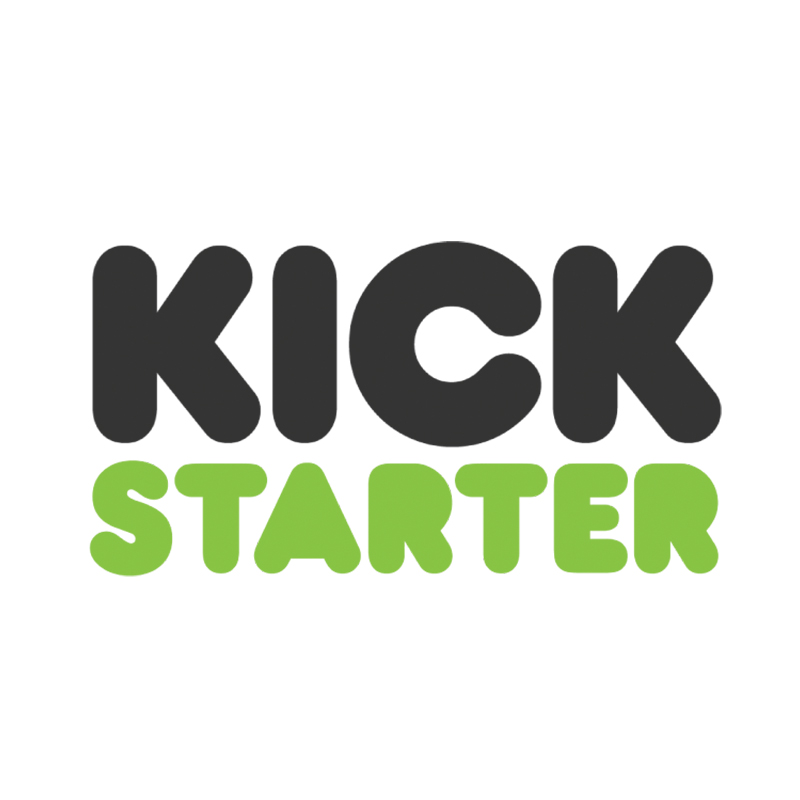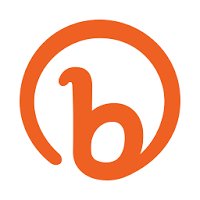
On Launching My Daily Micro-Journaling Cards
Note: This business is no longer running. It was started in 2019 and ended in 2024. Reason for closure: shut down.
Hello! Who are you and what business did you start?
Hey there, I’m Jared Gold, and I’m a founder of PurposeCards: daily micro-journaling cards that help you make every day successful. Simply fill out the sun side in the morning, the moon side in the evening, and then store your card in the box behind the “Completed” tab for easy reference later on. They’re the size of a credit card so they’re easy to take anywhere and intentionally minimalist so they’re easy to commit to.
We launched our Kickstarter on March 24th, and as of April 6th, we’ve raised $1,565. We decided to launch right as COVID-19 infections started to accelerate because we figured this product could be very timely (and we wanted to get this out the door ASAP). Therefore, we didn’t have time to build a list or other pre-launch things ahead of time, but we have multiple other marketing initiatives actively going right now, where if a single connection works, it could really make the campaign a massive success (more on that below).

What's your backstory and how did you come up with the idea?
I think I first caught the entrepreneurial bug like most people...I read The Four Hour Workweek (or rather, listened on Audible) back when I was 22, just graduated college, and absolutely hated my job.
Since then, I have been self-employed in stints of multiple years, as well as had the chance to work at two very successful tech startups here in DC.
I have a lot of ideas come into my head with the context of “This should exist.”
Last year, I was sitting at the coffee shop with my notebook (and no phone) - which is my “happy place” and my best ideas come through. I ended up sketching out an idea for a new tab Chrome extension, where every time I opened a new tab, it was like a “personal clarity” dashboard - where I could see images of my goals, along with a sidebar containing my daily focus, habits, and to-dos. I ended up hiring a front-end designer to polish it up and a front-end developer to build it. With no real marketing, it’s up to 1300 weekly active users and a 5-star review on the Chrome web store. I’m really proud of this, considering people are choosing to see my extension every time they open a new tab - which is very often.
I’ve learned entrepreneurship is a process of a ton of tiny steps, as opposed to a few massive leaps all at once.
I realized that there was something missing though. I wasn’t always at my computer, and I didn’t want to always head back to my computer to figure out my roadmap to a successful day. I knew I wanted something physical with pen-and-paper. I had tried other guided journals before, but they were too clunky, too involved to commit to, or just didn’t fit my aesthetic preferences.
So that’s how I came up with PurposeCards being super minimalist - all fitting on a single card that can go in your wallet (the size of a credit card). People can approach one day at a time, and anyone can commit to the very small amount of time needed to fill out the card.
I was able to throw up a website and share it amongst my network, and we ended up receiving ~$700 in orders for the initial prototype. So we considered that enough validation to launch that initial batch and go from there, which has now materialized into a full Kickstarter.
Take us through the process of designing, prototyping, and manufacturing your first product.
No surprise, I sketched this idea again in the coffee shop. Then I paid my PurposeTab developer (who also happens to be a good designer) to create a polished graphical version. I emailed that design to a few professional friends - one of whom ended up becoming my business partner on this.

I had never made a physical product before. I know print products are a lot simpler than things like electronics, and it really helped that I knew the physical constraints I wanted (two-sided and the size of a credit card), but there were a lot of small considerations that went into it.
After a good amount of research and speaking to a few industry pros, we found a vendor who could accommodate our (apparently unusual) print job via “print on demand.” We didn’t know how many units people would buy, and we didn’t want to sit on a ton of inventory, so we went this route. The box was another big challenge; custom boxes are very expensive unless produced in large quantities (which we really didn’t need). We lucked out in that Moo.com sells white unbranded rigid cardboard boxes. If you’ve ever used Moo, you know their products feel premium.
We basically broke even on the first round of orders because low-run product costs were quite high, and then the website and branded email addresses ran us about $40/mo. If you truly care about your new business or product, that amount is rather insignificant.
Right before our Kickstarter was ready, I realized that some amazing marketing would be to make a list of “VIP influencers” in the productivity/wellness space and try to get a demo box in their hands, with the hope that if they liked them, they would share them with their massive audiences. I wanted a more polished v2 for them.
I hired a friend of mine who is a talented print designer, and she created pixel-perfect design files for us with optimized margins that were slightly more user-friendly (for around $125). We found a local printer who was able to create our cards better to our design specs (still not full credit card height because they had to fit in the Moo boxes).
Custom boxes were still way too expensive, so we took the Moo boxes and worked with a local artist (that shared an office with my business partner), who painted the boxes black. Then we ordered high-quality lettering that we could “dry transfer” onto the boxes to say “PurposeCards.”

If the Kickstarter is successful, we will use some of the money to allow us to invest in creating a high-quality visual brand system - which will apply to develop an awesome high-quality custom box.
Describe the process of launching the business.
We launched the v1 website (which basically remains the same since we started, with just a good graphic asset or two to explain the product and what it would look similar to. We didn’t really do much promotion but ended up selling around $700 of product. While many were friends of ours, that still felt great and gave us the confidence to believe we were onto something.
A bit later on, I asked my friend, a talented 3D designer, to whip up a 3D rendering of our product, which brings the product to life a lot more than a standard 2D graphic. We created the website on Squarespace, as it just needed to be quite simple and allow both a) the collection of emails for an interest list and b) support simple eCommerce. It also helped that I had been self-employed and creating Squarespace websites for years.

After our initial prototype sales, my business partner believed that the next step would be launching a Kickstarter. We both believed that this would further validate demand on a bigger scale, and in addition to the chance of driving meaningful revenue, we could use some of that much-needed cash to create a truly custom and unique finished product.
We were lucky that my business partner had a friend in his professional network that believed in the idea and was a talented videographer. We paid him $500 for the costs of bringing on two crew members for the shoot, and then we are giving him a percentage of the total Kickstarter sales (capped at a certain amount). A professional video can cost in the multiple thousands (or tens of thousands) of dollars, and the video is a very important part of a Kickstarter. So once we figured this out, we were ready to move forward.
Our primary strategy was around sending the v2 prototypes to “VIPs” who would share it with their audience. What really accelerated our timeline was the global pandemic of COVID-19. We decided to mail out the prototypes and launch the campaign ASAP. Not just because we were unsure of any circumstances that might prevent the launch, but also because we figured that people now, more than ever, would be looking for products to help them boost their focus and mental wellness (which we believe PurposeCards can do for a lot of people). We acknowledged that this prevented us from building a big email list, waiting for influencer testimonials, or getting valuable media attention. We’re actively working on that now to make up for a lost time! Some of our VIPs have already gotten back to us and really love the product, so we’re seeing how we can turn that into widespread awareness.
Since launch, what has worked to attract and retain customers?
I think this is the area where I’m least able to give advice. Because we wanted to get this out the door, we didn’t really invest in any strong marketing initiatives of any kind.
If I was going to do this all over again, in a perfect [non-pandemic] world, I would have worked on building an email list ahead of time and organizing organic / earned blog + PR mentions.
I also think I would have worked to create a single amazing evergreen content piece, such as a master how-to guide or curated directory that was appealing to our most likely customer persona, which would have been branded “Created by PurposeCards.”
For the past few years, I’ve lived by doing my best to follow my energy, with the mindset of “This should exist.” When I was able to follow that, I made cool things. Even though none of those things have yet achieved a massive level of success.
How are you doing today and what does the future look like?
In regards to COGS, we basically broke even on the first sale of ~$700 in units (being that we produced in such a small batch). We’re in the red a bit from fixed costs, primarily when it comes to paying directly for the VIP units. But we saw that as a great investment in terms of the massive possible upside.
If our Kickstarter is successful, those funds will enable us to hire a high-quality branding firm and put the finishing touches to make this a premium product.
At the scale of around a 750-unit batch, we’re thinking that our margins will be around 40-50%. Which isn’t great in the direct to consumer space, but is definitely a start.
My business partner really likes the idea of DTC, but I’m personally more excited for corporate gifting partnerships, which possibly involve us putting an organization’s logo + primary brand color on the box.
Not to say that we couldn’t grow both business lines separately. My priority is to build a super lean business that runs well on its own, rather than going for a growth-at-all-costs with extreme ad spend that we’re seeing from a lot of DTC eCommerce brands.
Through starting the business, have you learned anything particularly helpful or advantageous?
I don’t think we made any massive mistakes. The one that comes to mind is that I included a hand-written note to all VIPs along with their boxes of PurposeCards. I know my handwriting sucks, but I did it anyway. One VIP emailed me to let me know he really liked them, but the note was illegible. Going forward, I will not be handwriting anything.
I think what really helped was my ability to quickly prototype what I wanted and go from a notebook sketch to a product I could test in real life for myself. That is one advantage to a product like a box of cards; it can be produced - at least decently to desired specs - by existing companies. It also really helped that I knew Squarespace well to throw up a website to accept eCommerce orders on the prototype units - just to see if even anyone would buy it (and their feedback once they had the product to try for themselves).
To sum it up, the design process went:
- Notebook sketch
- High-quality graphic design + print file
- Receive prototypes from the first print vendor
- 3D prototype graphic
- A pixel-perfect print design (to refine our product to mail to VIPs before Kickstarter)
It is extremely valuable to get your product in the hands of real users (bonus points if they’re paying) as soon as possible. I’ve learned entrepreneurship is a process of a ton of tiny steps, as opposed to a few massive leaps all at once. We’re trying to co-create as much as possible with customers, as our assumptions don’t necessarily reflect what the majority of our customers want.
What platform/tools do you use for your business?
Squarespace - for launching a simple and attractive responsive website that has most functionality you’d need to start out.
G Suite - this is Gmail/GoogleDocs for business. I don’t want to ever use anything but Gmail and I prefer GoogleDocs over MS Office.
Stripe - to accept payments (e.g. from within Squarespace).
Streak - a CRM right inside of Gmail. This is a simple way to track outreach to customers, partners, marketing contacts, etc.
Dribbble - Dribbble is an amazing public portfolio and social network for designers. This is how I found my talented designer for the initial PurposeCards design (along with the initial UI designer and front-end developer to launch PurposeTab). This is the best way I know of to find a good designer!
Kickstarter - This is the main crowdfunding platform on the internet. We’re using it to get the word out and see the public sentiment around PurposeCards in general. It has a large audience regularly looking for projects to back, so it allows us to get in front of many more people. Kickstarter helps us validate our idea, but only charges people if we reach our goal - meaning that if we don’t reach the scale we need to produce these, refunds are automatically issued to purchasers.
What have been the most influential books, podcasts, or other resources?
I’d have to say that the book that initially set this all in motion was The Four Hour Workweek by Tim Ferriss. I heard it on Audible when I was 23, and it opened my eyes to the concepts of lifestyle design and entrepreneurship. It was a real revelation for me.
The book that inspired me to commit to launching my PurposeTab Chrome extension, which then led me to develop the physical offshoot of that - being PurposeCards - was How to Be a Capitalist Without Any Capital by Nathan Latka. Like The Four Hour Workweek, it is a very non-conventional book that really tore down a lot of norms and got the wheels turning in my head.
Advice for other entrepreneurs who want to get started or are just starting out?
For the past few years, I’ve lived by doing my best to follow my energy, with the mindset of “This should exist.” When I was able to follow that, I made cool things. Even though none of those things have yet achieved a massive level of success, I’m super proud of what I was able to make and have no regrets. It’s been awesome to see that I could create something from simply an idea, allowing me to rethink what I’m capable of. Also delighting users/customers never gets old.
My main advice is this: scratch your own itch. Create what you think should exist for yourself. At the very least, you’ll hopefully have one active (and ultimately happy) user. It’s so much easier to make something good when you’re developing it for yourself.
Are you looking to hire for certain positions right now?
We’re open to a hungry marketer donating his/her time occasionally to help us!
Where can we go to learn more?
If you have any questions or comments, drop a comment below!

Download the report and join our email newsletter packed with business ideas and money-making opportunities, backed by real-life case studies.

Download the report and join our email newsletter packed with business ideas and money-making opportunities, backed by real-life case studies.

Download the report and join our email newsletter packed with business ideas and money-making opportunities, backed by real-life case studies.

Download the report and join our email newsletter packed with business ideas and money-making opportunities, backed by real-life case studies.

Download the report and join our email newsletter packed with business ideas and money-making opportunities, backed by real-life case studies.

Download the report and join our email newsletter packed with business ideas and money-making opportunities, backed by real-life case studies.

Download the report and join our email newsletter packed with business ideas and money-making opportunities, backed by real-life case studies.

Download the report and join our email newsletter packed with business ideas and money-making opportunities, backed by real-life case studies.
















